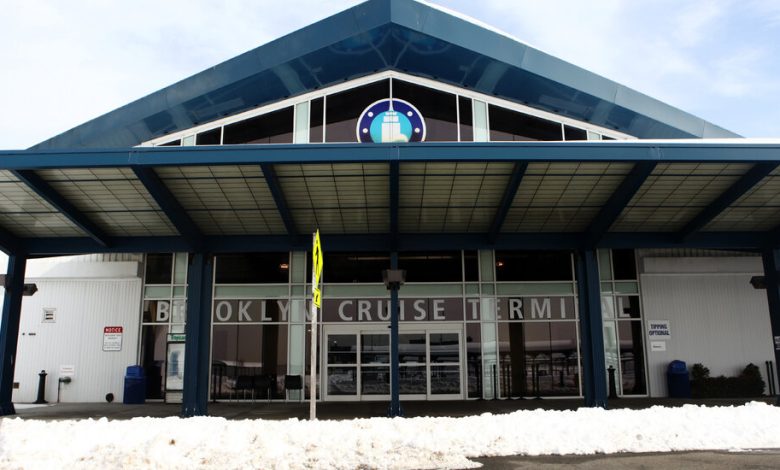New York City to Open Migrant Shelter at Brooklyn Cruise Terminal

With New York City at “its breaking point,” Mayor Eric Adams announced on Saturday that the city would open a new emergency shelter at the Brooklyn Cruise Terminal to help accommodate the influx of migrants.
The relief center will serve some 1,000 single, adult men, Mr. Adams said, a similar capacity to a tent facility that the city had placed on Randalls Island until it shut down last fall after operating for just a month.
The new center will also have a short shelf life: Mr. Adams said it will close ahead of cruise season this spring.
“With more than 41,000 asylum seekers arriving in New York City since last spring and nearly 28,000 asylum seekers currently in our care, our city is at its breaking point,” the mayor told reporters on Saturday.
He added: “We continue to surpass both our moral and legal obligations and meet the needs of people arriving in New York, but as the number of asylum seekers continues to grow, we are in serious need of support from both our state and federal governments.”
The first occupants will be relocated from the Watson Hotel in Midtown Manhattan; the cruise terminal will also house newly arriving adult men as space allows. The Watson Hotel will then be used to serve families with children who are seeking asylum.
The announcement was criticized by advocacy groups, particularly for the choice of location: far from the subway, close to wintry waterfront winds and in a high-risk flood zone, according to the city’s maps.
The emergency center “will needlessly expose future residents to the elements during some of the coldest months of the year,” the Legal Aid Society and the Coalition for the Homeless said in a joint statement. The city last year had proposed the first location for an emergency center on Orchard Beach in the Bronx, but it halted construction and abandoned the idea when the site flooded during a rainstorm.
“Hotels have always been the better short-term option, in contrast to erecting tents in inaccessible parts of New York City that are prone to flooding,” the groups added. “Continuing to move asylum seekers around the boroughs like chess pieces is callous and indicative of City Hall’s failure to competently manage this crisis.”
Mr. Adams has made the immigration crisis a focal point of his administration in recent months, and he has stepped up his campaign in the last few days. He visited El Paso last weekend, in part to increase pressure on President Biden to provide federal help to New York City.
The mayor then traveled to Washington, where he used an appearance at the U.S. Conference of Mayors and an interview with Politico to press his message.
“There is no more room,” Mr. Adams told Politico. “It’s not that we’re getting to that point. We’re at that point, and I wanted to be clear with New Yorkers of what we’re facing, how this is going to impact every city service that we deliver to New Yorkers.”
The arrival of tens of thousands of migrants in New York has overwhelmed city services and has cost $300 million so far, a figure the Adams administration has said could ultimately rise to $2 billion. New York City recently proposed a $103 billion budget with planned cuts in anticipation of future deficits.
The federal government has already approved $800 million in grants for states, local government and nongovernmental organizations dealing with the increase in migrants. Much of the aid is expected to flow to New York City.
Part of the issue is that the city cannot move people from the shelter system, which is already overwhelmed, to permanent affordable housing, of which there is not enough. According to the most recent city data, there are a record 69,075 people in the city’s shelter system, including about 24,000 asylum seekers.
This fall, after the city’s main shelter system population hit a record, the city built the Randalls Island tent facility to handle an expected increase of arrivals. It was dismantled after the Biden administration placed new restrictions on who could cross the border, causing the migrant flow to slow to a trickle.
A proposal to house migrants on cruise ships was also abandoned after criticism that the asylum seekers would be isolated. Mr. Adams’s office insisted that the new plan would house migrants in the terminal, not on the ships themselves.
